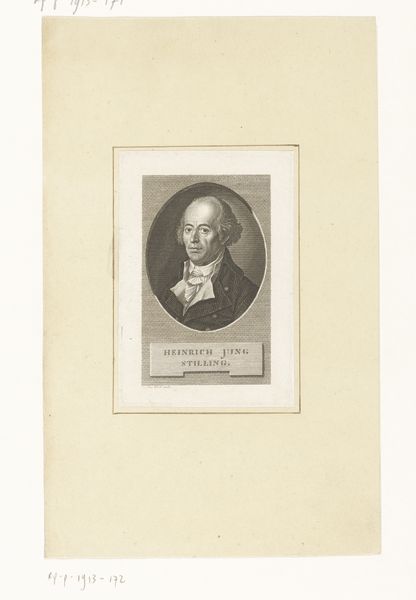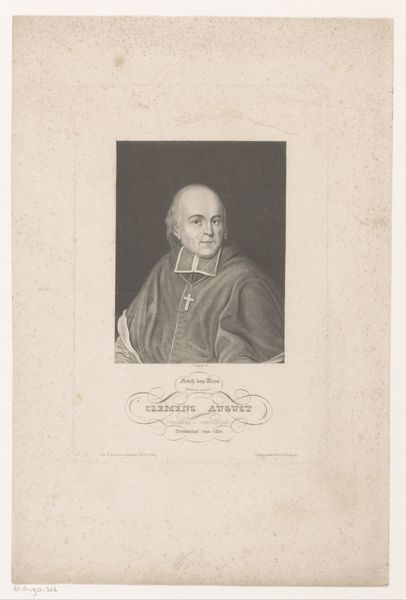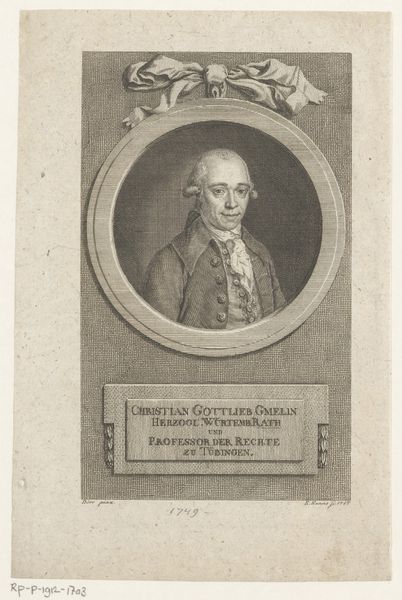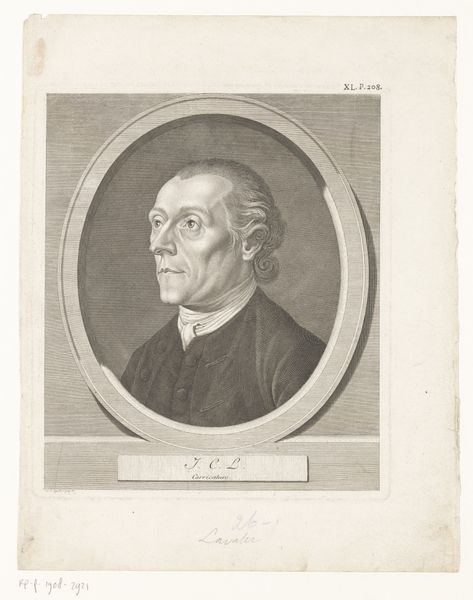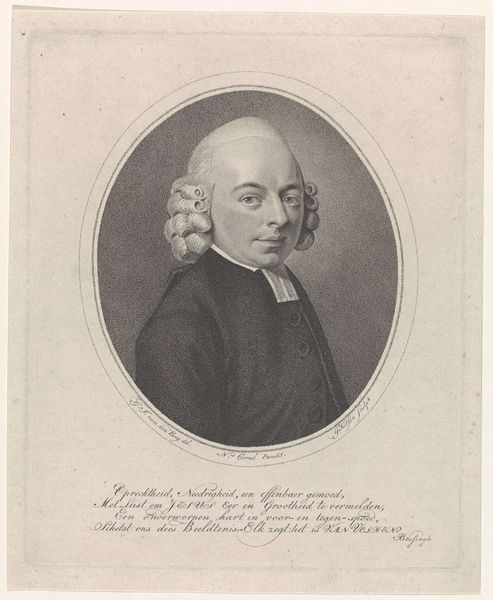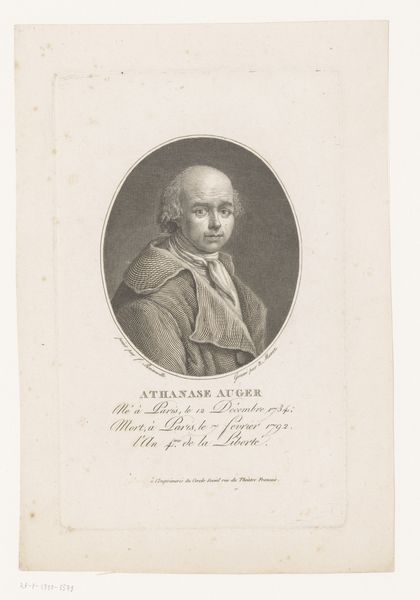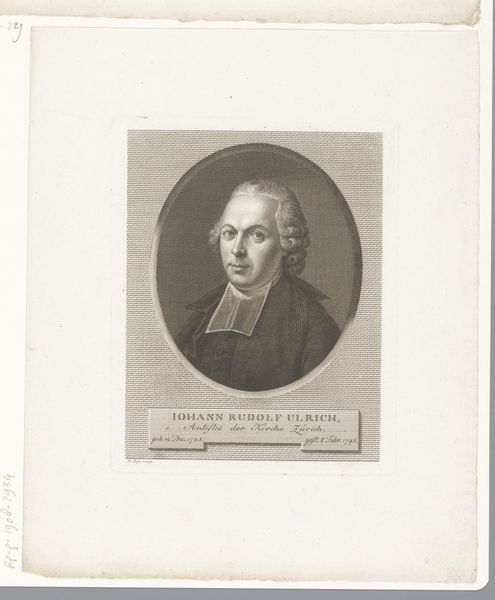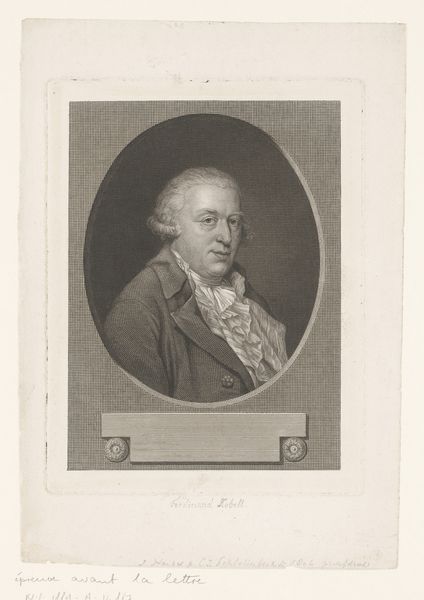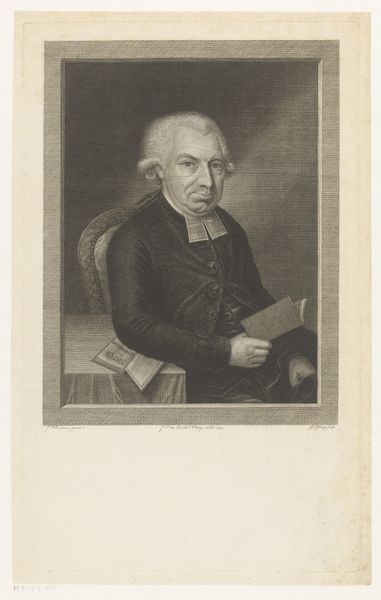
print, engraving
#
portrait
#
neoclacissism
# print
#
academic-art
#
engraving
#
realism
Dimensions: height 226 mm, width 166 mm
Copyright: Rijks Museum: Open Domain
Curator: Look, Franz Xaver Gebhard's "Portret van Johann Gottlob Leidenfrost." Made between 1785 and 1794. There’s a presence there, don't you think? Editor: It's got that crisp Neoclassical austerity. Stately, almost unnervingly direct with its gaze. And so very...gray. The lithographic lines emphasize precision. The process of printing makes one ask, what other versions exist? Who consumed this image, and where? Curator: Indeed. The lines, born from engraving, convey a quiet dignity. Leidenfrost seems caught between worlds, almost like he can feel us looking back at him through time, you know? What kind of soul could contain an entire scientific effect? It’s heavy to contemplate. Editor: Oh, the Leidenfrost effect – that intriguing moment when a liquid vaporizes near a hot surface, creating a vapor barrier? Here the portrait freezes that state of fleeting temporality in ink on paper. Think of all the skilled labor in the original design, printing and distribution, with images mass produced for an ever increasing consuming public! What statement could be truer to a scientist and a rising entrepreneurial class than reproducibility? Curator: Beautifully put! And yet... isn’t there something tender about it as well? That soft glow around his face… a touch of Romanticism peeking through despite all the Neoclassical rigidness? There's a person there behind that veneer of scientific reason. I almost want to hold it for a minute… just feel that strange mix of detachment and presence. Editor: I’d say the material choices play right into it. Engraving, prints... a way of circulating authority, knowledge, but also status. By literally imprinting his face for circulation. An efficient dissemination for a rational age. Curator: He embodies the enlightenment… a man of his time rendered for eternity. And the object itself allows this transmission beyond mortality through its careful making. Editor: Well, it's quite revealing about what our culture chose to valorize via technology. That the process reflects a desire for a kind of permanence through replicable media... Fascinating stuff to consider here today, wouldn't you agree?
Comments
No comments
Be the first to comment and join the conversation on the ultimate creative platform.

